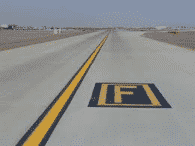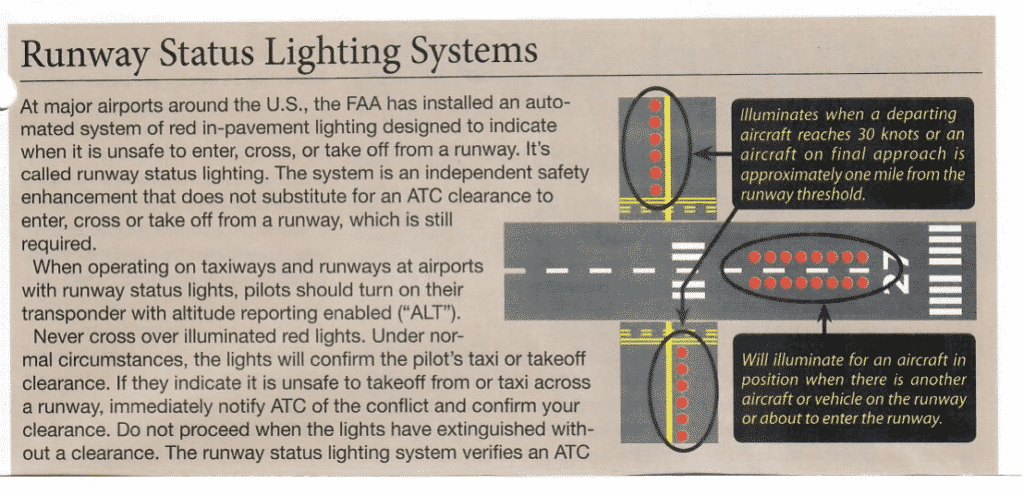Runway Incursions Still Happening. FAA’s Latest Solution More Lights
Runway incursions still happening. FAA’s Latest Solution More Lights The problem of runway incursions has been around for as long as there are runways.
But at big airports, especially at night, the problem has been more frequent and more dangerous.
Big airports have radar to tell the tower where airplanes are on the surface and many pilots now have GPS that tells them where they are, but runway incursions still happen.
The FAA’s preferred solution is to throw money at the problem in the hope that it disappears. So the FAA has spent billions changing colors, adding colors, adding lights, changing lights but the problem persists.
Let’s see why.
All taxiways have yellow lines drawn down the centerline. Put your nose wheel on it and your good…well not really.
Some taxiways have green lights imbedded on top of the yellow lines. Follow the green and you are good…well not exactly.
Of course the taxiways are marked on each side by blue lights so stay between the blue lights and you are okay…well no.

Then there are the big painted circles that are invisible at night with the runway number painted on them on the taxiway.

And there are the flashing red/yellow lights at the end of the taxiway and entrance to the runway.

Does that mean stop, caution, both or just another cool set of lights.
Of course the lights for the taxiways are yellow with black letters and for the taxiway you are taxiing on the background is sort of yellow and black with black letters.


Now the FAA has been adamant that all pilots be taught to follow ATC instructions. So adamant has the FAA been that instead of using English terms as required by International agreements, they have chosen to alter the language to throw in a little linguistic confusion. Traditionally, that means forever, the FAA said that “Position and Hold” meant enter the runway and stay put until “Cleared for Takeoff.”
Every pilot on the planet knew this term.
But, so everyone could be confused and eons of training and experience thrown to the wind, the FAA had the bright idea of changing the well-worn phrase to “Line Up and Wait.”
Now, if there is no line this phrase makes no sense and there could be no line because only one aircraft is allowed on the runway at a time. But, we pilots have come to learn it and abide by it, senselessness or not. Which brings me to the latest goofy FAA expenditure called “Runway Status Lighting Systems.”
The FAA had the bright idea, bright red in fact, to add a new set of lights to the confusing array of lighting and painting color symbiology.
On the taxiways adjacent to the active runway are red lights imbedded into the tarmac. If you are cleared onto the runway and the lights are red, you are to disregard your ATC clearance stay put and ask what’s up.
Once you are cleared to Line Up and Wait, assuming the red lights are off or you have been instructed by ATC to disregard them, after you line up or are cleared for takeoff there are another set of imbedded lights on each side of the Runway Centerline. If they are lit you are not to takeoff, but to ask ATC whether it really means cleared for takeoff or something else. Meanwhile, other aircraft that may be landing on the same runway will no doubt be going around until this is all sorted out. If you are making an intersection takeoff, you will never see either set of status lights so you are doomed.

Well done once again FAA. You have spent tens of millions of dollars to add more confusion to the process, guaranteed more runway incursions, and worse now told pilots to disregard ATC instructions when these lights are lit, which they may or may not see.
Over and Lights Out!
Arthur Alan Wolk
5/30/19




